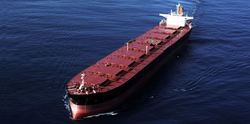Dry bulk market fragile as IMO 2020 takes its toll

Despite the Baltic Dry Index moving up by two points on Friday to 774 market participants hold a dim view as the International Maritime Organisation sulphur cap rules takes its toll. A producer of iron ore or coal sees a 40% increase in freight cost overnight with no ability to recover those costs.
Stifel analyst Benjamin Nolan suggests either to reduce the cost of freight or increase the price of the commodity being sold to re-balance the dry bulk market
THE crash in dry bulk freight rates since the beginning of the year was daunting but expected due to the upcoming Chinese New Year holidays and seasonal weakness.
The seasonal factors that drive down the Baltic Dry Index in early January include southern hemisphere foul weather, a tendency for power companies in China to schedule their buying at year-end, ahead of the lunar new year holiday and owners of dry bulk newbuildings scheduled to be delivered at the end of the fourth quarter waiting until January to launch their ships.
Although the BDI was up two points to reach 774 on Friday, having fallen every single day since December 3 last year, the recovery is just a respite and not a turnaround as the abnormally early start of seasonal weakness is due to the inflationary impact of International Maritime Organisation’s sulphur regulations on commodity demand.
The rates crash leaves the market breathless with freight rates across all segments testing new lows, particularly for capesize vessels, with a spot average of $4,000 per day, which is insufficient to cover the daily operating costs of the ships, according to Stifel. Around 43 days ago, capesize rates averaged around $26,000 per day.
Specifically, the landing price of 62% fine iron ore in China was about $85 a tonne at the beginning of the year.
As of January 1, those ships not scrubber fitted would have had to start buying low sulphur fuel, which is about $300 per tonne more expensive.
“Factoring in average capesize consumption and voyage durations, this translates into an increase in fuel cost of about $4.50 per tonne of iron ore,” Stifel estimates. The impact on thermal coal is similar.
Thus, overnight, a producer of iron ore or thermal coal which is collectively 29% of all dry bulk trade, would have seen a 40% increase in freight costs with no immediate ability to recover those costs through higher commodity prices, it noted.
Stifel analyst Benjamin Nolan suggests that there are only two mechanisms to re-balance the market: reduce the cost of freight or increase the price of the commodity being sold.
Still, “a quick way to accomplish both is to simply do nothing,” he says.
“By booking fewer cargoes, the balance of supply and demand for dry bulk ships will quickly swing toward oversupplied, while the inventory levels of the respective commodities will begin to fall, eventually pushing up prices.”
Assuming that is in fact the tactic being deployed in the current market, it seems to be working.
Iron ore prices are up about $2.50 since the first of the year and freight rates are down by even more than the inflationary impact on fuel prices.
Mr Nolan acknowledged that the reason dry bulk ships have been impacted while ships like tankers and container ships do not seem to have been, is that the relative value of the respective cargoes are very different.
“A cargo of crude may be worth $130m and freight is a tiny fraction of cost, while a cargo of iron ore is only worth $15m.”